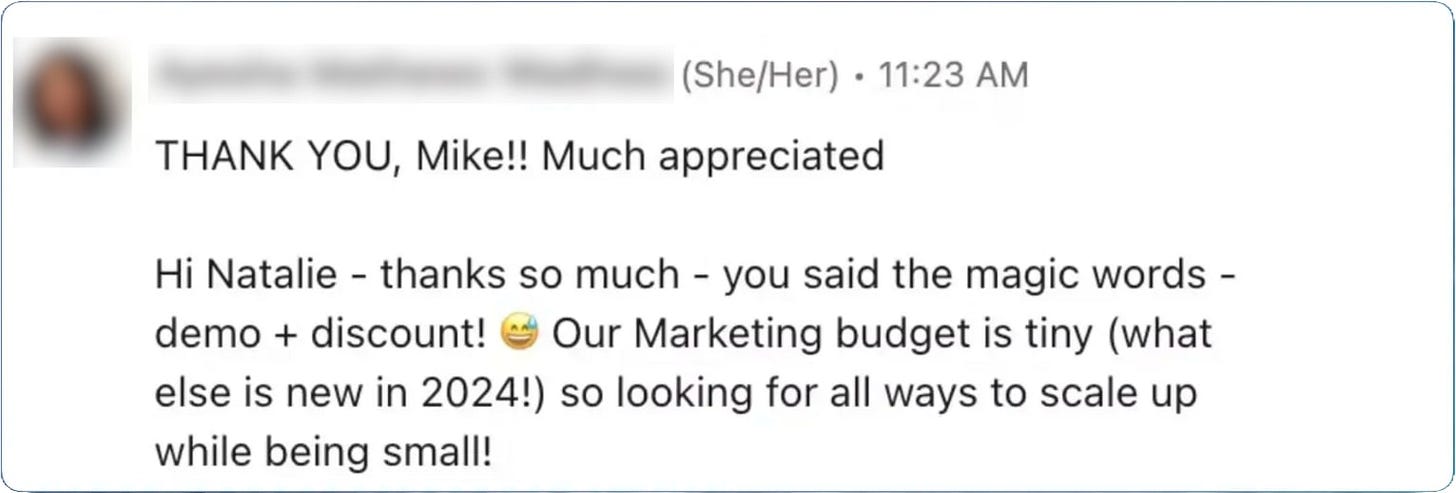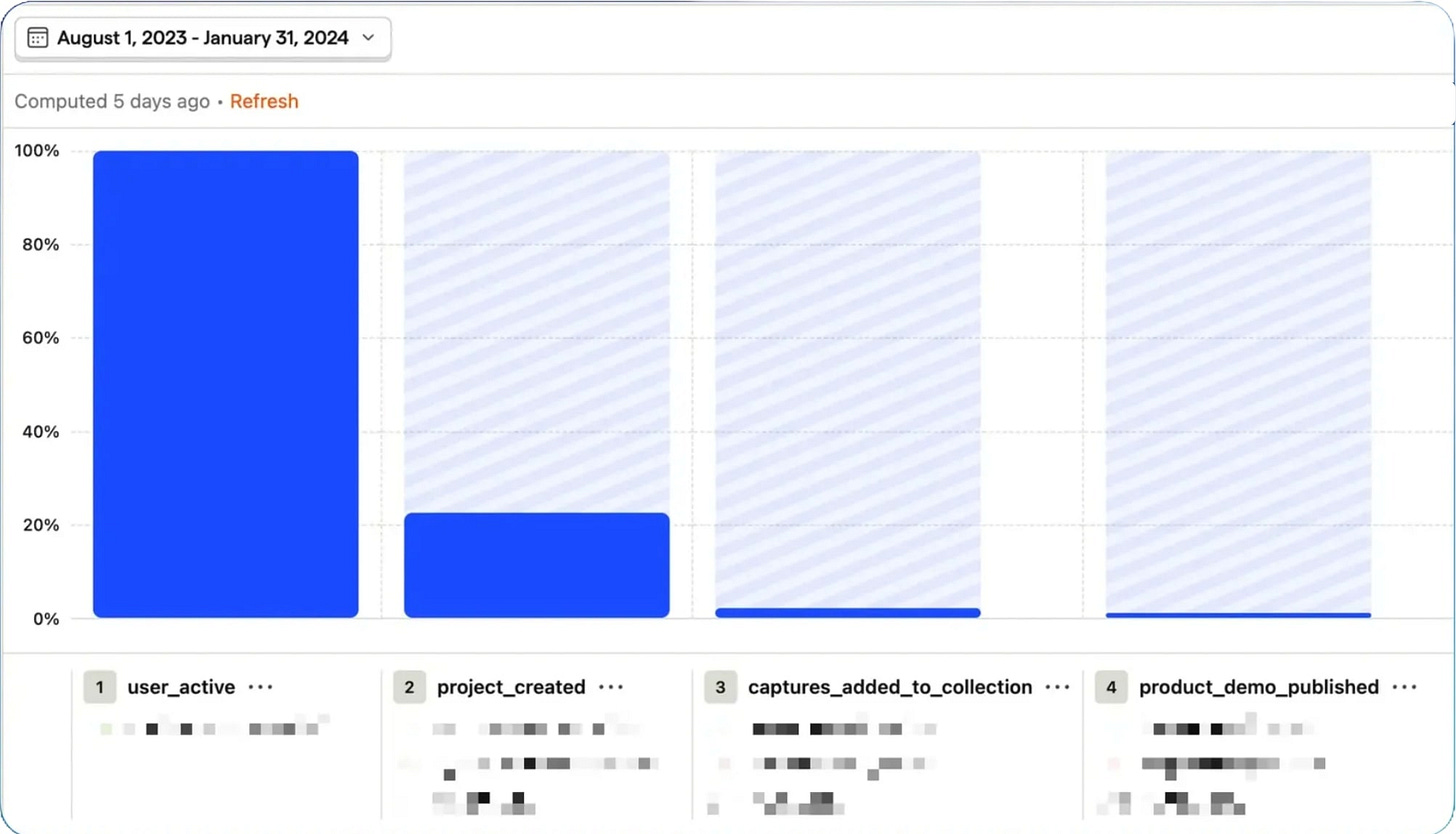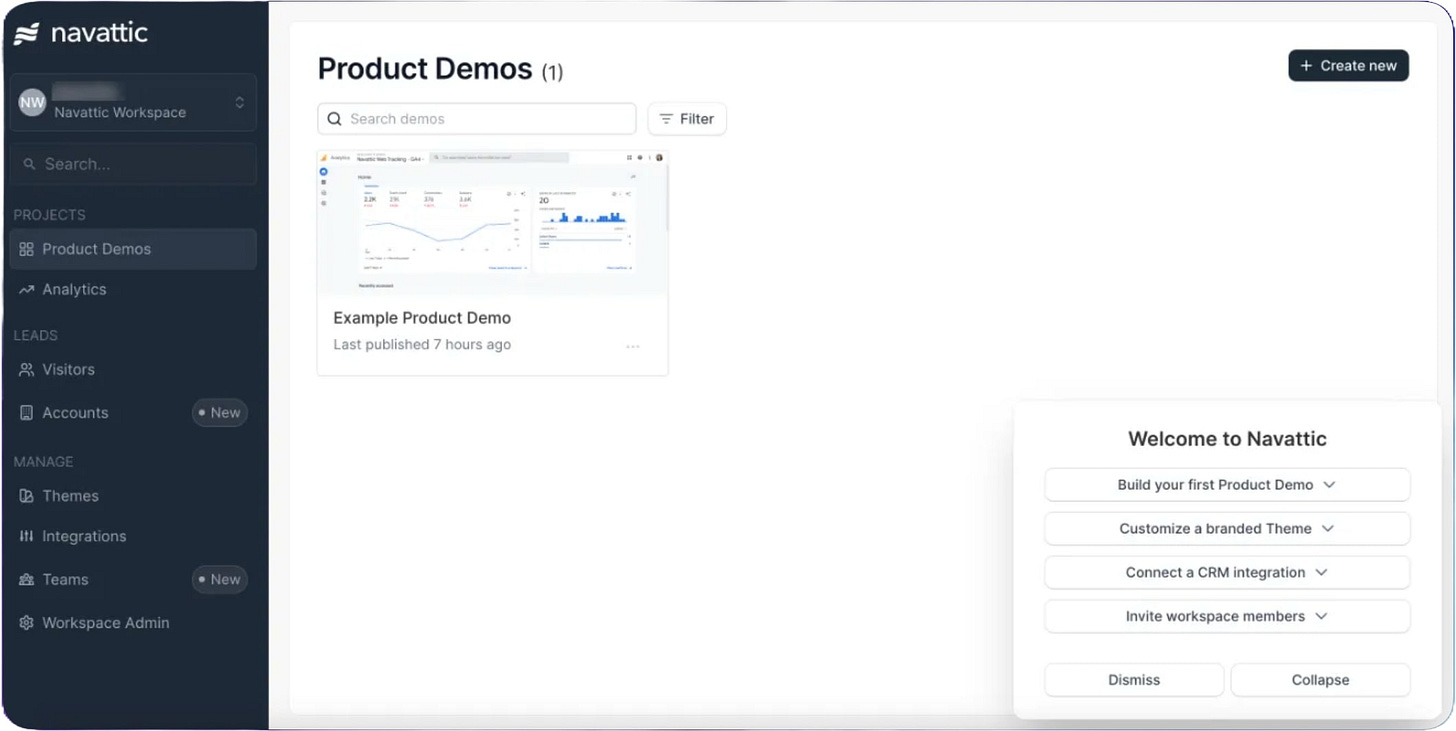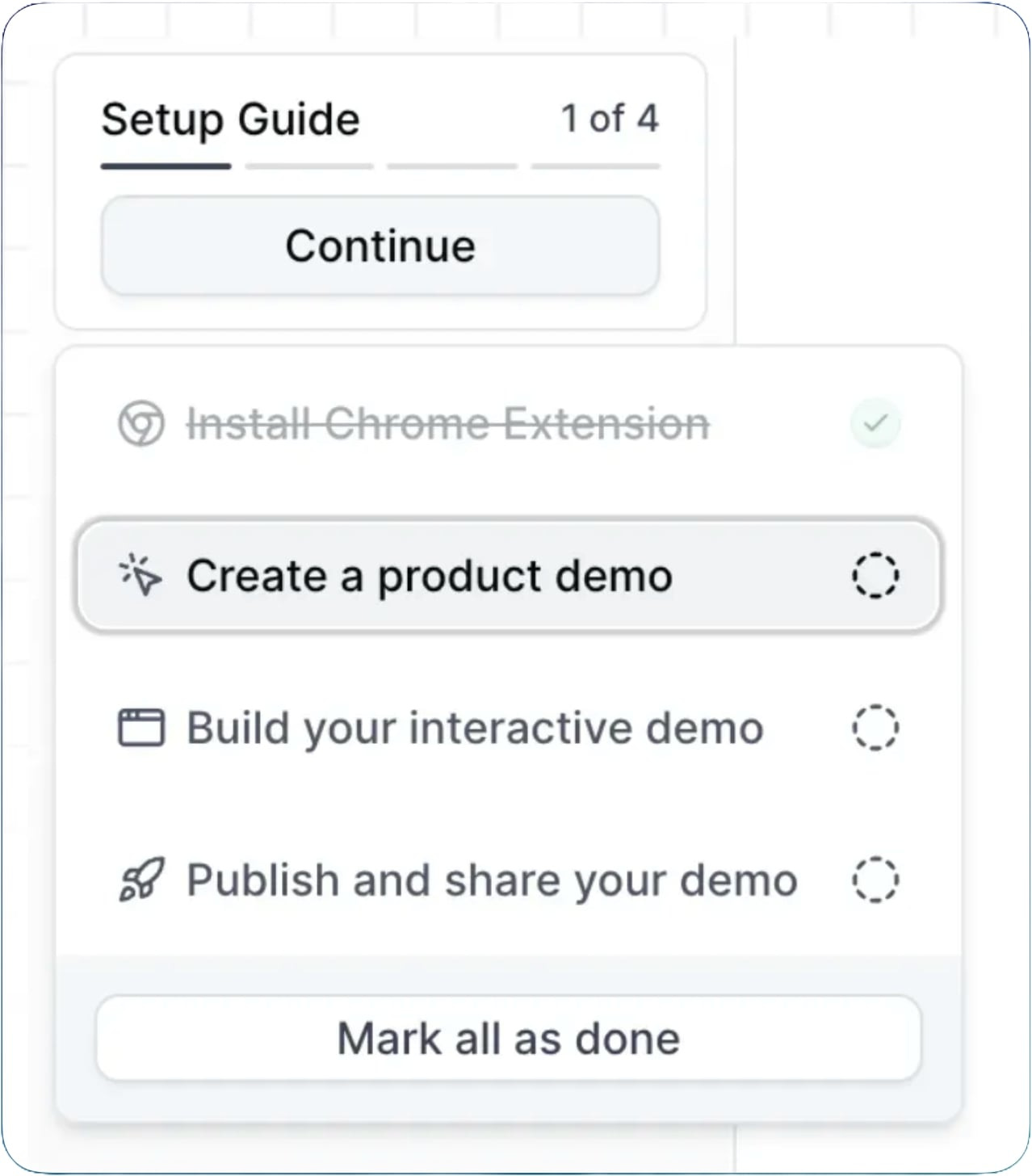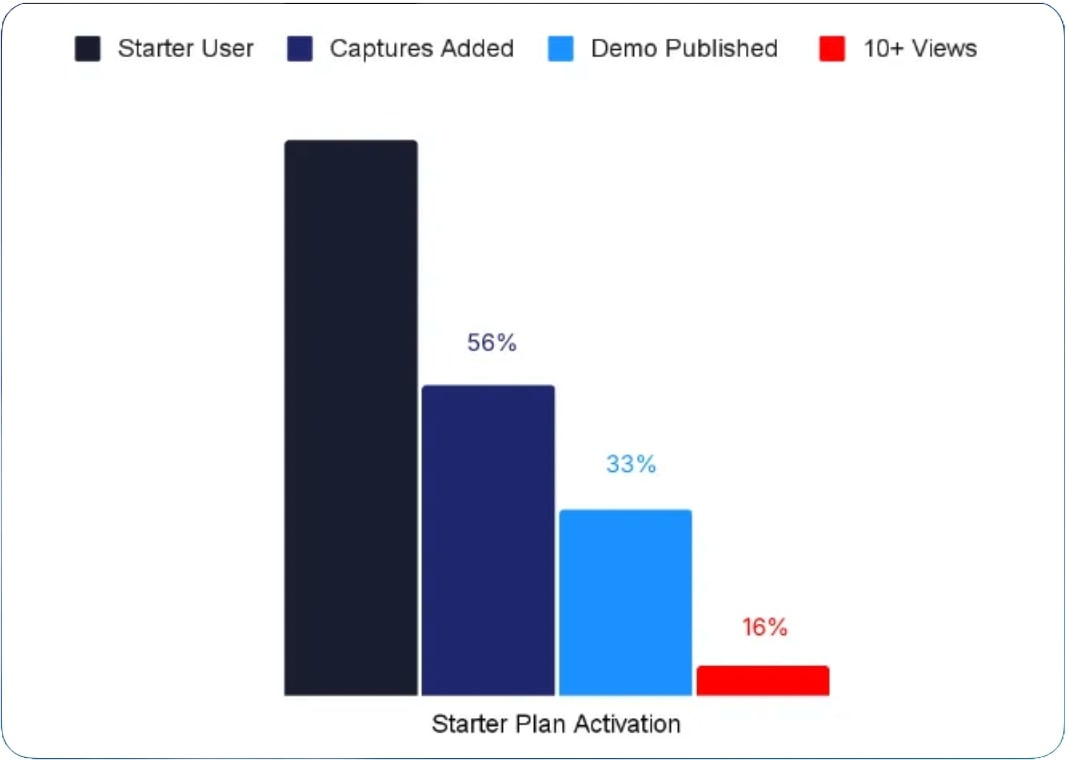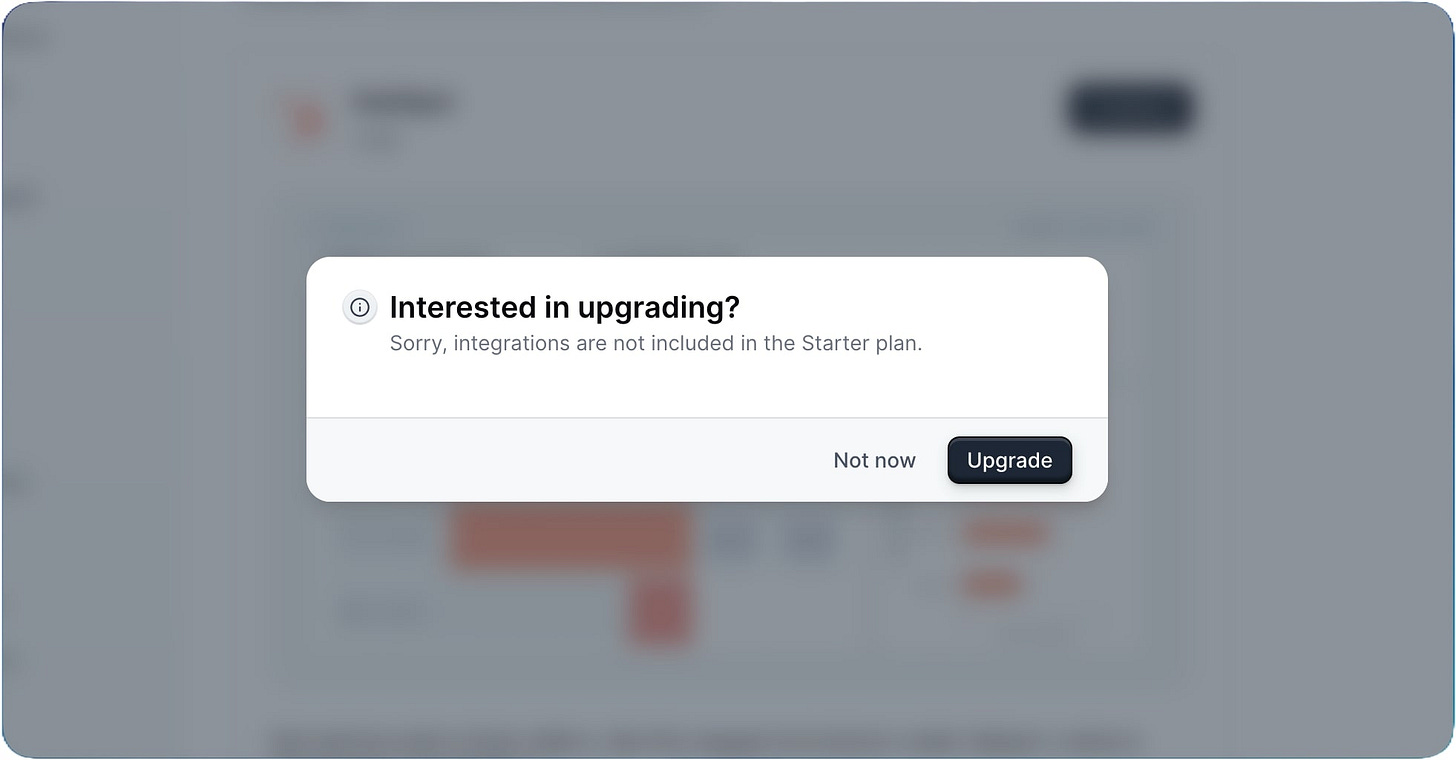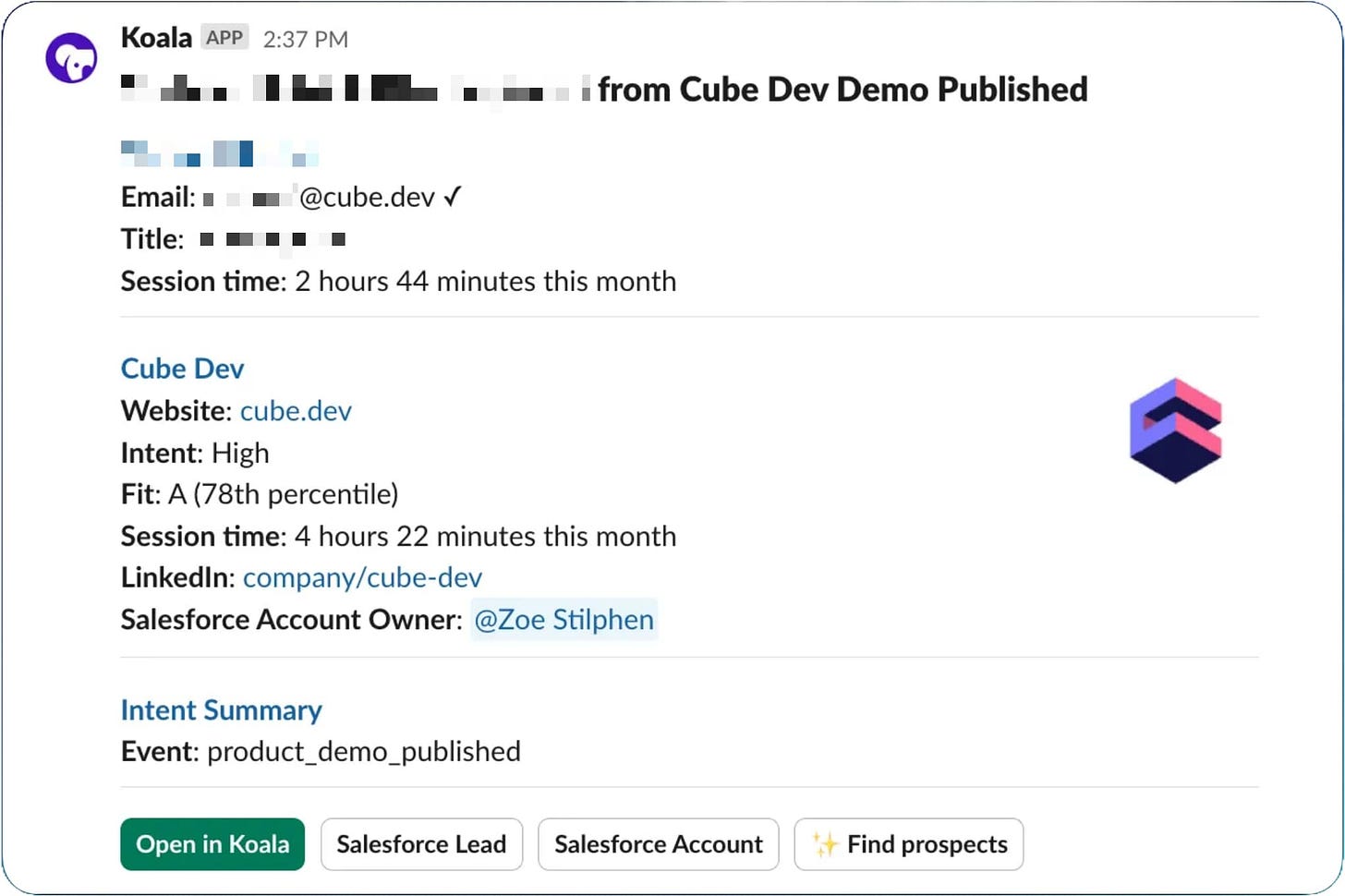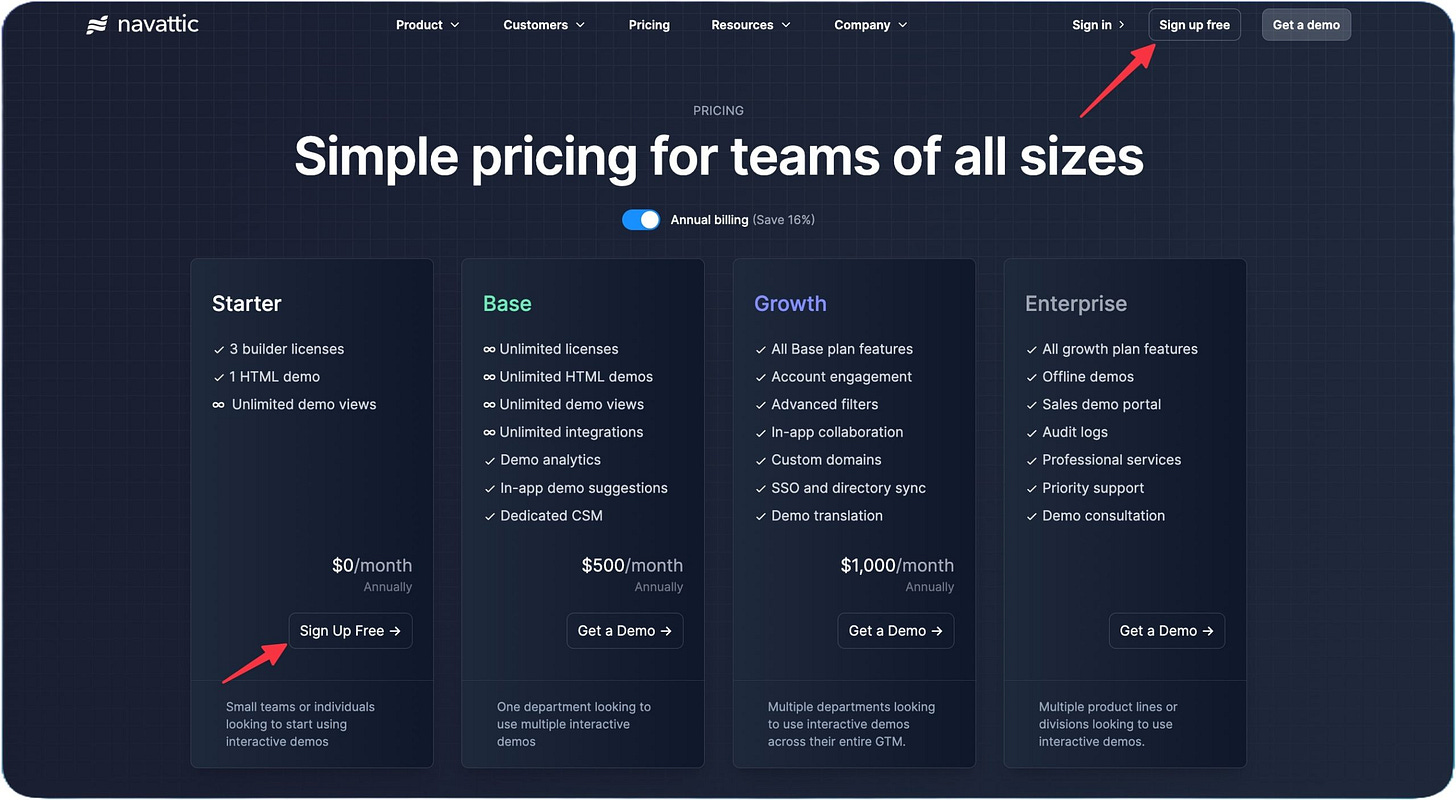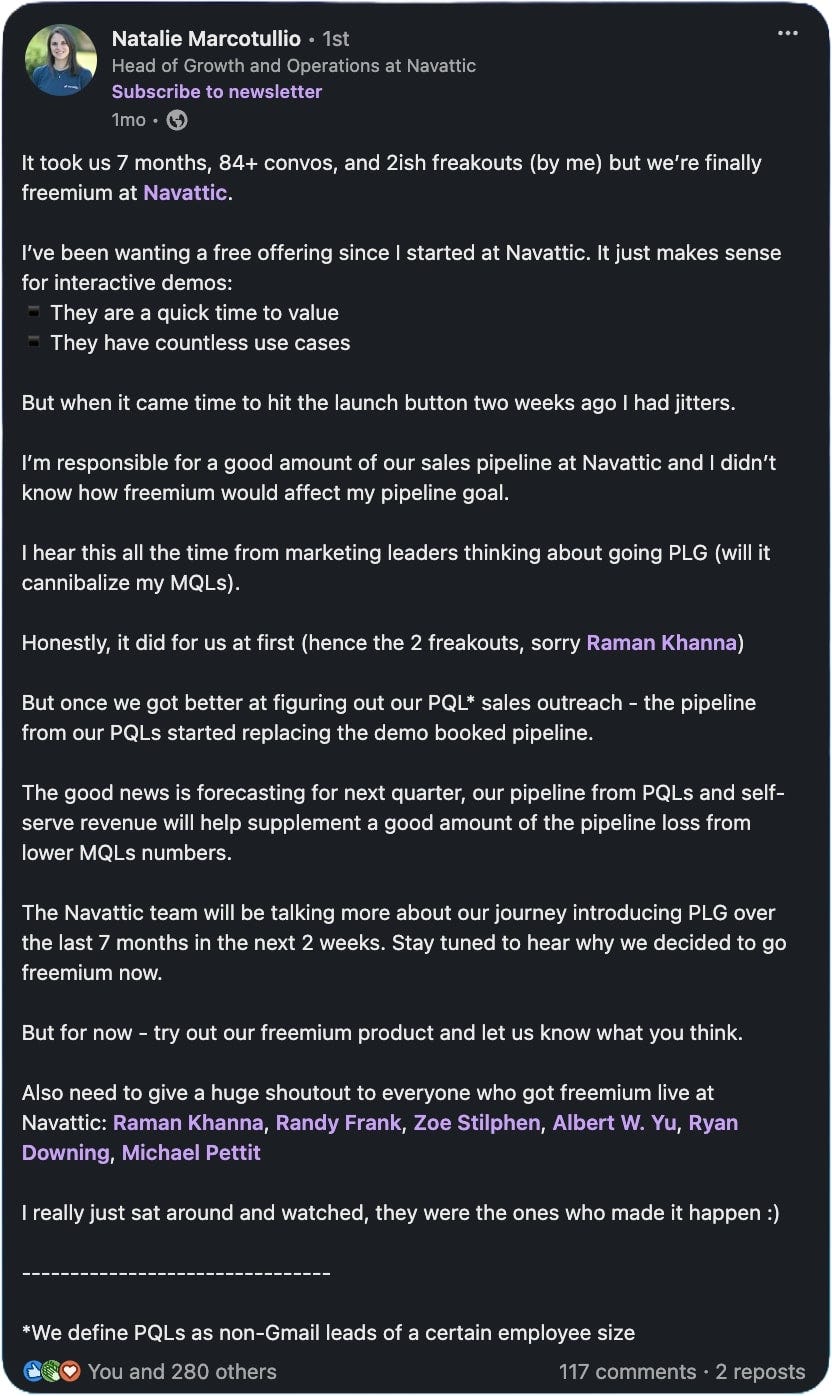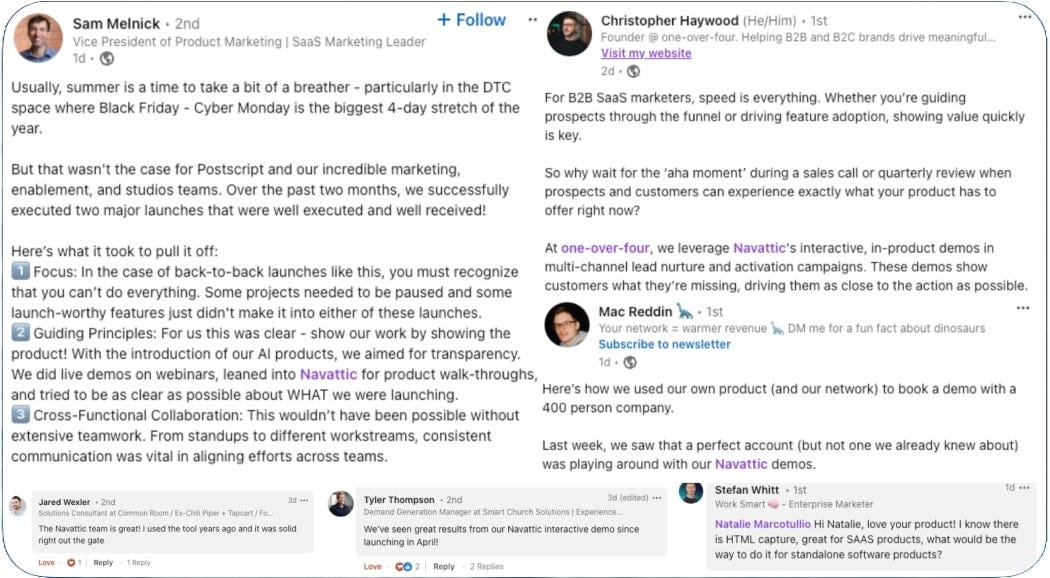What they learned from their freemium launch
Lessons from Navattic’s transition to PLG
👋 Hey, I’m George Chasiotis. Welcome to GrowthWaves, your weekly dose of B2B growth insights—featuring powerful case studies, emerging trends, and unconventional strategies you won’t find anywhere else.
In our very first guest post here on GrowthWaves, we are joined by the team from Navattic to learn about their step-by-step process of transitioning to a PLG motion.
Before they started their journey, they were disappointed in the lack of actionable insight on how to get through the transition as unscathed as possible.
“While there is high-level content around going PLG, we couldn’t find many resources with tactical steps/operational details for companies that are making this change.”
So, Natalie Marcotullio, Navattic’s Head of Growth, and Raman Khanna, Navattic’s Growth Marketing Manager, decided to share their experience with the GrowthWaves community and hopefully make this process easier for other companies that want to make the same transition.
Let’s get to it!
Key findings (TL;DR)
Navattic started with a $50/month “Starter Plan” to test a product-led growth (PLG) motion. This product work transformed their activation rate – it started at 5% and is now ~33%+.
Once activation improved, they opened access by offering a free plan. Users could build and publish one interactive demo for free, with integrations and some advanced features gated behind paid plans.
The freemium launch drove real traction. Within 48 hours, they saw 7 organic customer posts, 45k impressions, 1.5k reactions, and 385 comments.
A few other surprising outcomes:
High-quality sign-ups on the free plan. It is not just SMBs who sign up – about 45% of sign-ups are from companies with 30+ employees.
Demo requests actually went up instead of down.
After upgrading, their Customer Success team reported having more productive relationships with freemium users who’ve already experienced the product’s “wow” factor.
Reasons for transitioning to PLG
To start – why did we decide to go product-led in the first place?
Quick context:
Navattic helps marketing and sales teams create interactive product demos. Many customers use interactive guided demos on their marketing site (Ramp, Fivetran, Vitally) and as a follow-up asset in the sales process.
We had a sales-led motion with $500/month and $1k/month plan offerings.
While we were seeing strong growth, our Head of Marketing received a lot of notes like the ones below. It became clear there was an appetite for teams to try the product so they could prove value to their stakeholders and secure a budget.
When we first discussed the idea of freemium, not everyone on the team was on board.
Initially, the following questions/objections arose:
Would it cannibalize sales?
Would our customers downgrade from paid to free?
Who would own support for freemium users? Sales? CS?
They were valid concerns. To take an incremental step in this direction, we got buy-in around a $50/month plan.
Step 1: Develop a “Starter Plan”
It seemed like a good compromise – a lower barrier to entry without fully committing to freemium.
So, using Mutiny, we showed 10% of our website traffic (across all segments) a variant that included a one-seat starter plan for $50/month.
With our starter plan now live, we saw our first few users pay $50/month upfront to access the single seat plan.
This was a great signal; even with the friction in this experience, there was clear interest in a light, entry-level plan.
Step 2: Assign owners and define key metrics
We assigned a “tiger team” internally to own the Starter project. It included:
Raman, Growth Lead – The “Owner” of Starter. Shared updates at weekly team meetings, tracked metrics, talked to users, etc.
Randy, Co-founder, Product Lead – Talked to users, worked tickets into product sprints, set up tracking & internal systems.
Ryan, Engineering Lead – Talked to users, owned core feature development.
In terms of metrics, there are three components to a successful PLG motion – acquisition, activation, and conversion.
Given there was interest in our $50/month plan (acquisition), we decided to next focus on activation.
Step 3: Improve activation
Our customers up to this point were onboarded by our team of CSMs and we hadn’t spent time focusing on the self-serve experience.
We defined activation as publishing a demo in the product. Solid SaaS activation rates are anywhere between 20 and 40%. As shown below in the PostHog report, our initial activation rate was ~5%.
To remedy this, we did the following:
Raman & Randy routinely watched PostHog sessions to identify points of user drop-off.
We conducted user interviews to learn more about their early experience with the product.
Ryan pushed weekly updates designed to resolve those points of friction across the product.
A core part of the demo creation flow in Navattic is to create captures of your application using Navattic’s Chrome Extension.
We found that our old experience wasn’t cutting it for free users. We ran a Wynter user test on our existing onboarding and one user called it “startling”.
In chatting with users, the core problem was that they weren’t anchored on their next step and often, it meant they bounced right away.
So, over a few iterations, we created a pop-up that specifically laid out the steps and helped them get started.
We also added a set-up guide to clearly anchor users on what their next action should be in the product.
This helped a lot.
Our user activation rate shot up to 33%.
Now that we were seeing stronger activation rates, the team was comfortable taking the next step; expanding access to the starter experience.
Step 4: Expand the starter experience
Expanding access to our free plan wasn’t as easy as changing our website CTA. At this point, it forced us to confront the following questions:
Free trial or freemium?
This was the first big decision once we aligned on the free tier.
A time-bound free trial would allow users to experience Navattic and it would have a natural conversion point.
Freemium, on the other hand, would allow users to build and share demos without the pressure of a ticking clock. It would also expand our user base, which we knew would supercharge our most powerful growth loop (the more people seeing “Powered by Navattic”, the better) and we would also get valuable data to improve the product experience.
We elected to pursue freemium.
Now, what should we include in the free version?
This was tricky. We wanted users to experience the “wow” moment that our platform delivers for free, but we also wanted to avoid cannibalization of our paid plans. We figured that this would naturally lead to interest in upgrading for more features and additional demos.
So, we decided that users should be able to build and publish one high-quality interactive demo for free. To protect our paid plans, we added a seat limit and gatekept integrations.
What is our path to monetization?
Ideally, users who experienced the “aha” moment of publishing the demo would see the true value of Navattic, be able to easily share it with their team internally, and get buy-in for a purchase.
To facilitate this, we added contextual upgrade prompts, upgrade buttons, and created a self-serve checkout flow. These were engineering investments but were well worth it to ensure that users could upgrade in-app.
Now we had the basics set up for our core freemium motion in place.
Next, we used Zapier to route leads based on company size to our sales team.
To help prioritize leads, we used Koala to track key product signals, like publishing a demo or website actions like visiting the billing page. Our sales team loves these alerts.
We used Customer.io to set up email nurtures to guide users through their customer journey (tips for building your first demo, how to understand demo analytics, the benefits of upgrading to our base/growth plans, etc).
With this in place, we were ready to launch to all of our website traffic.
Step 5: Launch to 100% of website traffic
To maximize reach, we prepped content for our blog, our podcast, and Slack communities.
We also asked key team members to spend ~1 hr drafting a personal LinkedIn post discussing the launch and why we went this route.
On launch day, we turned the dial so that 100% of traffic would see the new experience 🎉
Raman sent out a launch day calendar hold and at peak LinkedIn posting time (10am ET), we all published our posts and engaged to maximize reach.
We were blown away by the reception from our network.
In the 48 hours after launch, we saw 7 organic customer posts around the launch, ~45k impressions, 1.5k reactions, and 385 comments (many from existing customers!).
Sign-ups, WAUs, and demos created all jumped off the charts that week. Although very early, it seemed to resonate with our ICP and opened the door so more people could experiment with interactive demos.
This comment below was awesome to see; this was exactly the persona we were targeting with a starter offering.
Recap and unexpected learnings
In the ~6 weeks since launch, we’ve seen the following unexpected benefits from the freemium offering:
It now allows agencies, partners, and consultants in the martech world to recommend Navattic more frequently (many signups now come through this channel).
It’s not just for startups. ~45% of sign-ups are companies with over 30 employees and non-work emails.
We initially expected to see demo requests cannibalized by the freemium offering, but actually demo requests stayed consistent.
Customers are launching fast – we’ve seen many startups and even larger companies launch the same day after signing up for an account.
Our CS team loves working with freemium accounts that upgrade. These accounts already know the product well and can start their CS journey with “level two” conversations.
We still have room for improvement in our website conversion, activation, and free-to-paid conversion rate, but early signals suggest that going freemium was well worth the effort.
Hope this write-up helps other companies that are considering PLG!



